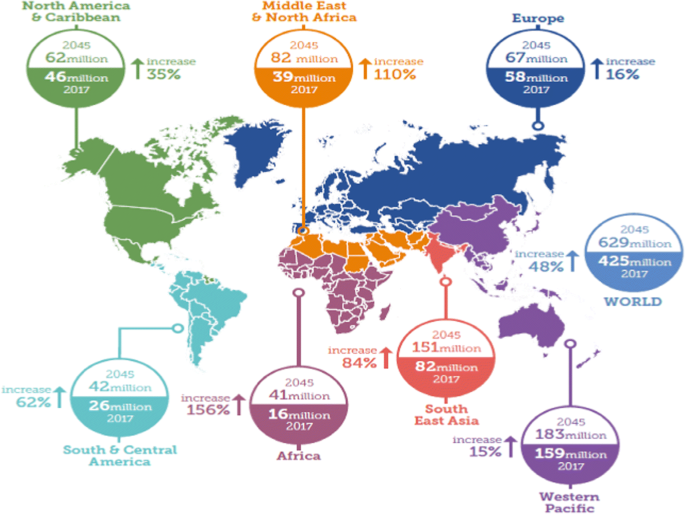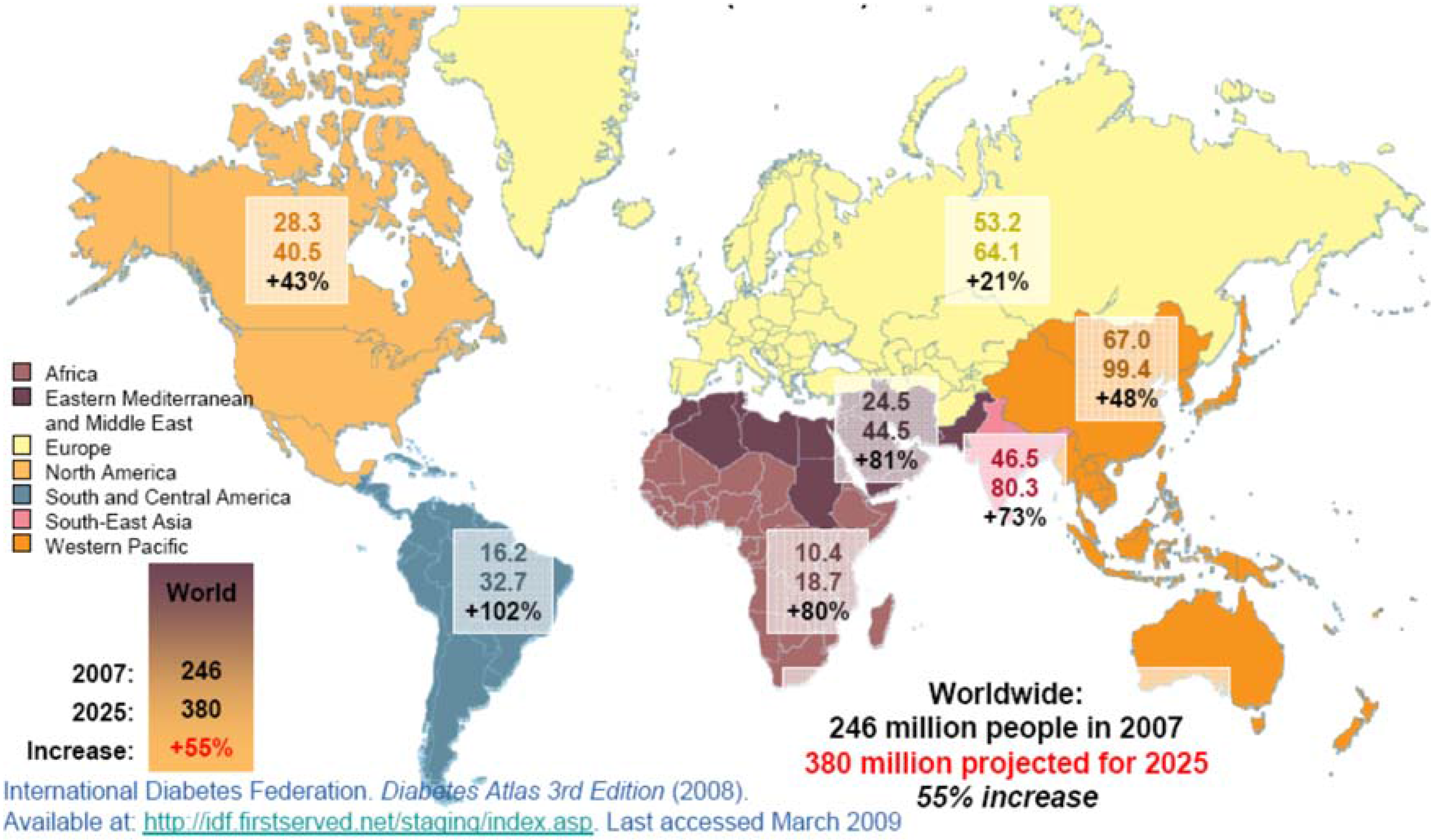Epidemiology of Diabetes mellitus type 2T2DM represents 80-90 from the total number of diabetes cases and it is frequently encountered in overweight and obese persons. Abstract and Figures Diabetes mellitus is a chronic disorder of glucose metabolism with serious clinical consequences.
 Epidemiology Of Diabetes Mellitus And Cardiovascular Disease Springerlink
Epidemiology Of Diabetes Mellitus And Cardiovascular Disease Springerlink
Epidemiology of diabetes The disease burden related to diabetes is high and rising in every country fuelled by the global rise in the prevalence of obesity and unhealthy lifestyles.

Epidemiology of diabetes. The latest estimates show that there was a global prevalence of 425 million people with diabetes in 2017 which is expected to rise to 629 million by 2045. Diabetes is a major cause of blindness kidney. Diabetes continues to grow at epidemic levels in the United States and around the world according to the World Health Organization WHO the International Diabetes Federation IDF.
Fifty percent of Pima adults 35 years of age had diabetes. Epidemiology of diabetes. Diabetes is a costly and common disease that needs serious attention and awareness.
In 1971 Bennett et al. Diabetes causes devastating consequences such as neuropathy retinopathy nephropathy and vasculopathy. In 2017 approximately 462 million individuals were affected by type 2 diabetes corresponding to 628 of the worlds population 44 of those aged 15-49 years 15 of those aged 50-69 and 22 of those aged 70 or a prevalence rate of 6059 cases per 100000.
The number of people with diabetes rose from 108 million in 1980 to 422 million in 2014. The Epidemiology of Type 2 Diabetes. The latest estimates show that there was a global prevalence of 425 million people with diabetes in.
Epidemiology provides a scientific basis for clinical and public health practice. This varies markedly between type 1 and type 2 diabetes Genetic and behavioural risk factors and the interplay between them. The multi-system complications of.
Diabetes is a costly and common disease that needs serious attention and awareness. Reported the extremely high diabetes prevalence among American Pima Indians. Two landmark epidemiological studies reported in the 1970s heralded the diabetes epidemic that we recognize today.
Approximately 463 million adults 20-79 years were living with diabetes. The rising disease burden of diabetes mellitus globally is a major public health priority placing unsustainable demands on individuals their carers health systems and society. 1Centre for Primary Health Care Studies The University of Warwick CV4 7AL Coventry UK.
The latest estimates show a global prevalence of 382 million people with diabetes in. At international level the increase of diabetes prevalence is judged mainly taking into account the increase of prevalence of T2DM. Epidemiology research IDF is the global reference for accurate up-to-date estimates of the prevalence of diabetes and its impact on individuals and health economies.
Indeed epidemiology can be used to guide how we define diagnose and screen for diabetes to describe the present and future burden of diabetes and to highlight opportunities for intervention. Diabetes causes devastating consequences such as neuropathy retinopathy nephropathy and vasculopathy. First published in 2000 the IDF Diabetes Atlas is produced by IDF in collaboration with a committee of scientific experts from around the world.
By 2045 this will rise to 700 million The proportion of people with type 2 diabetes is increasing in most countries 79 of adults with diabetes were living in low- and middle-income countries 1. Epidemiology of Diabetes addresses the patterns risk factors and prevention tactics for the epidemic of diabetes in the US population. Rgadsbywarwickacuk The prevalence of type 2 diabetes is increasing dramatically across the globe and in some areas has reached epidemic proportions.
The epidemiology of diabetes shows distinct patterns of distribution by age sex ethnic group and rural or urban area of residence. Epidemiology of Diabetes addresses the patterns risk factors and prevention tactics for the epidemic of diabetes in the US population. Prevalence has been rising more rapidly in low- and middle-income countries than in high-income countries.
Epidemiology of diabetes Nita Gandhi Forouhi Nicholas J Wareham Abstract The rising disease burden of diabetes mellitus globally is a major pub-lic health priority placing unsustainable demands on individuals their carers health systems and society.

